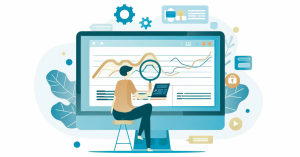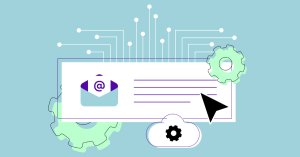Email marketing has been and still is one of the most effective methods of reaching customers. However, we’re all too familiar with overflowing inboxes—cue screenshot of an email app on a mobile phone screen with 3,000+ unread messages.
To fight the clutter, we as marketers must focus on how to create meaningful interactions. In this article, we’ll explore tactics to boost engagement and help you create emails that resonate with your audience.
Setting Expectations
Right off the bat, it’s important for new subscribers to know what to expect from you.
Here’s what to keep in mind when setting expectations at the time of opt-in:
Frequency
It’s better to be explicit about email frequency. Is this a daily, weekly, or monthly email? Can the frequency of emails be tailored to the subscriber’s preferences? After this expectation is set, follow through on it and try to avoid unexpected spikes in email volume because this can lead to reduced engagement or even unsubscribes. Check out our other article on the optimal frequency of emails to send for better results.
Topics and Content Focus
Outline the types of content that your new subscribers will receive. This could be news and updates, discounts and sales, tips and tricks, etc. Are they able to select the type of communications they want to receive or are they automatically opted in to everything? Having that added ability to choose the topics they are most interested in can personalize their experience and keep them subscribed and engaged for longer.
Exclusive Content and Benefits
Be sure to highlight the perks of subscribing to your emails. For example, this could include exclusive event previews, subscriber only merchandise, special discounts, or any other fun and exclusive content. Communicating the benefits they can expect to receive in upcoming communications can encourage them to keep a watchful eye for your emails and boost your open rates.
Personalizing Your Conversations Through 1st Party Poll Data and Analytics
In addition to setting and meeting subscriber expectations, listening strategies can be used to boost engagement and retain your subscribers’ attention. Create opportunities to gather their input and study their engagement patterns to understand your audience better and tailor your messaging in a way that speaks directly to them.
Polls, surveys, and feedback forms are great tools for gathering insight on your subscribers. Taking the time to plan and implement these tools throughout your campaigns will help you understand and address your subscribers’ preferences, pain points and interests. Consider incorporating a short, one-answer poll directly in your emails to start the conversation. Here are a few examples:
- Welcome or Onboarding Campaigns: “How would you rate your onboarding experience?” Anyone that answers below a 4 on a scale of 1-10 could automatically receive additional communication and support.
- Post-Sale Campaigns: “Would you like personalized recommendations based on your order?” Most brands send cross-sell and upsell campaigns after a purchase, but offering this self-segmentation opportunity may boost engagement with the follow-up content you provide.
- “Which statement best describes you?”: This is another self-segmentation question you can use to identify and deliver relevant content to your audience.
- Website Engagement Auto-Responders: “Looking for something? Would you like us to call you?” Those that answer yes can be queued for a follow-up call from a sales or customer support team member.
In addition, any analytics associated with your emails can also provide you with valuable metrics about your subscribers and their behavior. Email open rates, click-through rates, and website interactions can let you know what’s working and help you optimize for better engagement in the future.
Re-Engaging Email Subscribers
Re-engaging inactive subscribers is an important aspect of email marketing. These were hard-earned contacts that took careful planning, and probably some marketing budget, to gain. Putting the time into re-engagement strategies comes with plenty of benefits. For one, it’s more cost effective to keep a customer than to earn a new one, and maintaining an active subscriber list is important when it comes to email deliverability and sending reputation.
Take time to personalize your re-engagement emails. Do some digging into why inactive subscribers dropped off and craft messages that give them a reason to come back. Like your classic abandoned cart email, don’t be afraid to call them out on their inactivity. “Hey! We noticed you haven’t been engaged with our emails lately. What kind of content would you be interested in receiving?”
Another option is to entice inactive subscribers with exclusive offers or other incentives that encourage them to take action. Maybe they’ve been waiting around for a big deal. Now’s the time to utilize targeted offers to get their attention.
Finally, you can be straightforward and give them the opportunity to unsubscribe. Often times, this can put you back on their radar and get them thinking about the value of your emails.
The Takeaway
Keeping “conversation starters” in mind when sending emails, and “listening” to subscriber engagement patterns is a way to build stronger relationships with your audience. It’s all about the quality of the conversation. While you’re creating your strategies, also remember to re-evaluate regularly and adapt to your audience’s needs. These are the habits that will drive success in the long run.
Looking for more email marketing insights? We can deliver them straight to your inbox each month. Subscribe to our monthly newsletters that touch on all things digital marketing. Need a little more? We’re here to help you get on track. Contact us at expert@emfluence.com with any questions.


